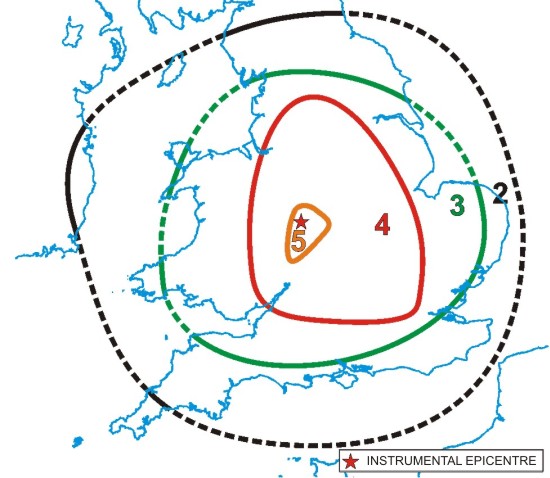Introduction
What is an Earthquake?
Why and Where?
Seismic Waves
How We Measure Them
Locating Earthquakes
Measuring the Size of an Earthquake
Intensity
The Structure of the Earth
The Biggest and the Deadliest
Earthquakes in the UK
Links to Seismology Information
Printable PDF of Earthquakes Booklet (2.7 MB)
|
Intensity is a measure of an earthquake determined from the observed effects, especially damage. For a given earthquake, intensity normally decreases with distance from the epicentre. The observations can then be compiled to make macroseismic maps showing lines of equal intensity.

Above: Macroseismic map for the magnitude 4.7 ML Dudley earthquake of 2002.
The European Macroseismic Intensity Scale
1 - Not felt - detected by seismic instruments only
2 - Very weak - felt by very few people
3 - Weak - felt by a few people indoors
4 - Noticed by many people, windows and doors rattle
5 - Strong - some small objects fall over
6 - Slightly damaging - objects fall off shelves
7 - Damaging - parts of chimneys fall
8 - Very damaging - large cracks in walls
9 - Destructive - some houses collapse
10-Very destructive - many houses collapse
11 -Devastating - most ordinary buildings collapse
12-Completely devastating - practically all structures above and below ground are heavily damaged or destroyed |